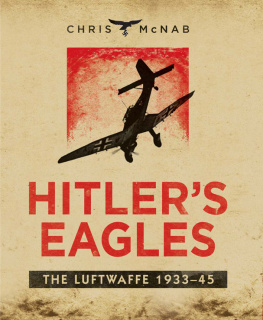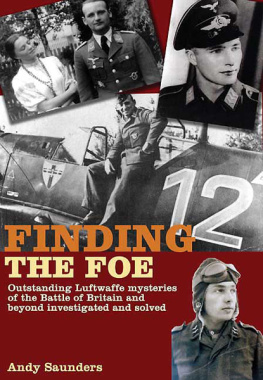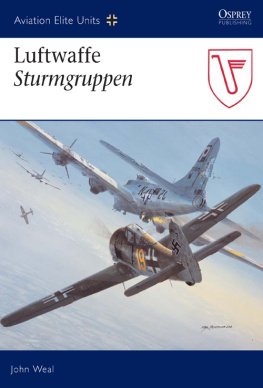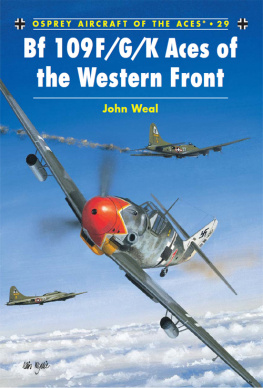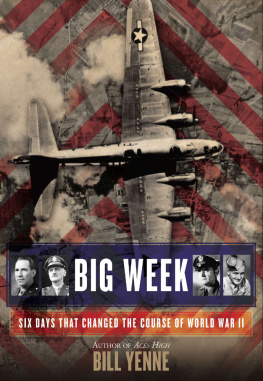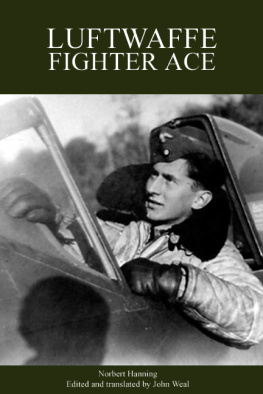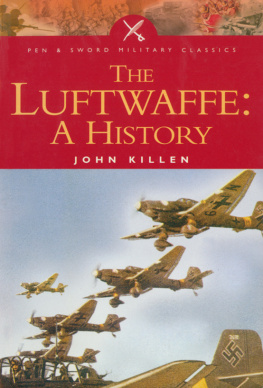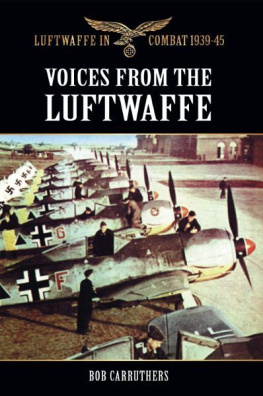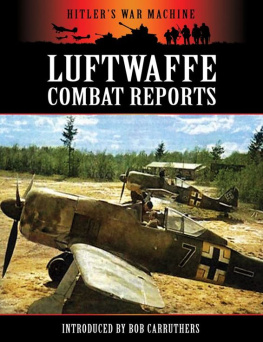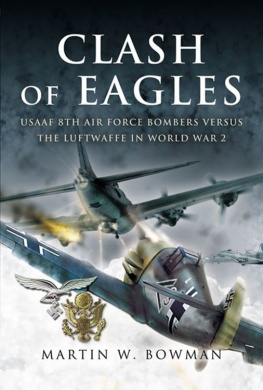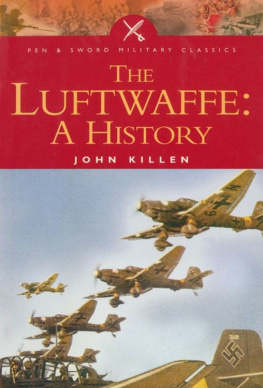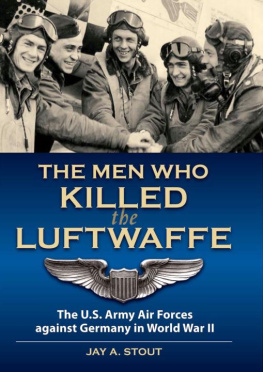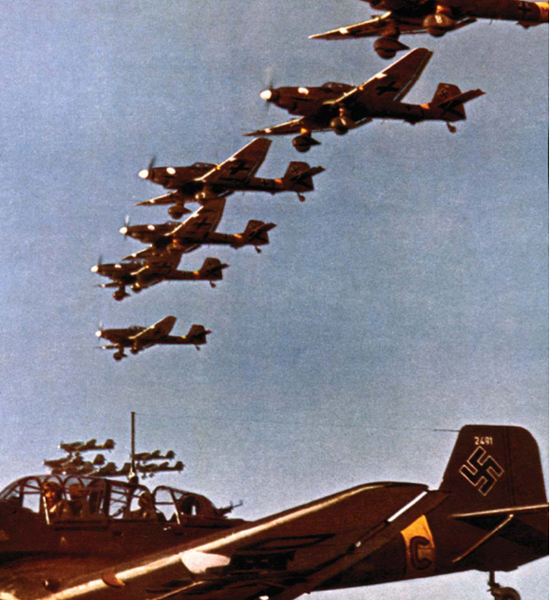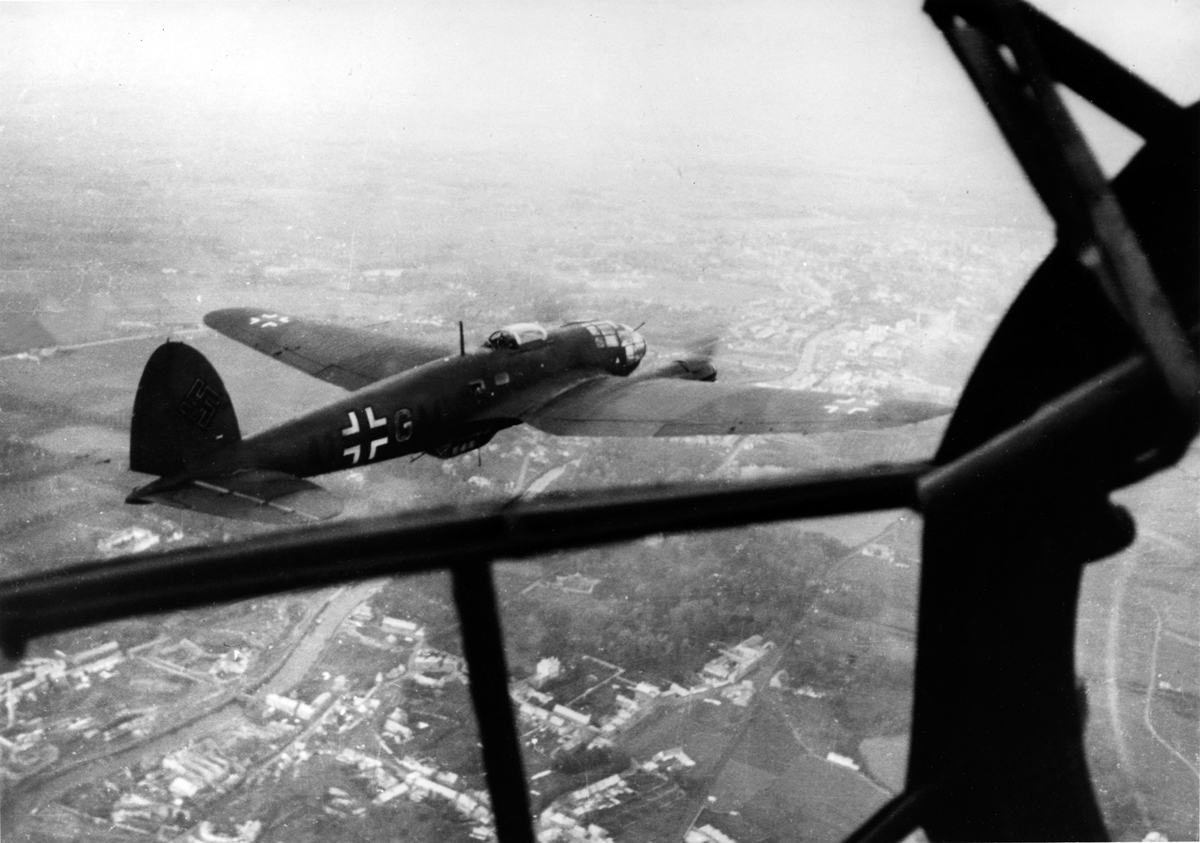HITLERS EAGLES
T HE L UFTWAFFE 193345
Chris McNab
CONTENTS
A force of Heinkel He 111s near their target over England during the summer of 1940. Once deprived of their Bf 109 escorts, the German bombers were acutely vulnerable to the predations of British Spitfires and Hurricanes.
INTRODUCTION
T he story of the German Luftwaffe (Air Force) has been an abiding focus of military historians since the end of World War II in 1945. It is not difficult to see why. Like many aspects of the German war machine, the Luftwaffe was a crowning achievement of the German rearmament programme. During the 1920s and early 1930s, the air force was a shadowy organization, operating furtively under the tight restrictions on military development imposed by the Versailles Treaty. Yet through foreign-based aircraft design agencies, civilian air transport and nationalistic gliding clubs, the seeds of a future air force were nevertheless kept alive and growing in Hitlers new Germany, and would eventually emerge in the formation of the Luftwaffe itself in 1935.
The nascent Luftwaffe thereafter grew rapidly, its ranks of both men and aircraft swelling under the ambition of its commander-in-chief, Hermann Gring. It also gained pre-1939 combat experience during the Spanish Civil War (193639), which helped it to refine tactics and technology before testing them on an even larger scale over Poland and Western Europe in 193940.
The traumatic defeats experienced by the Allies during these first years of war are in no small measure due to the capabilities of the Luftwaffe as a tactical air force. While the superb Messerschmitt Bf 109 achieved air supremacy and inflicted attrition on Allied air fleets, Junkers Ju 87 dive-bombers acted as precision-attack flying artillery ahead of advancing ground forces and Heinkel He 111, Junkers Ju 88 and other bombers pounded broader targets. Aviators grew in confidence, and some became literal celebrities as they racked up dozens of kills and missions. Men such as ace fighter pilots Helmut Wick (56 kills), Wilhelm Balthasar (47 kills) and Werner Mlders (100 kills) struck a glamorous chord with a public that was becoming acclimatized to victory, gracing the covers of magazines and newspapers and featuring in the nightly newsreels.
Warning signs were there from the start, however. Although the Polish Air Force, for example, was crushed in relatively short order, unescorted German bombers and dive-bombers still proved vulnerable to fighters, even obsolete Polish biplanes. More ominous, and of utmost significance to the eventual outcome of the war, was the Luftwaffes costly failure to subdue the Royal Air Force (RAF) during the Battle of Britain, a battle that exposed the tactical shortcomings of the German Air Force. (The subsequent Blitz also revealed the more significant issues with the Luftwaffes capability to act as a strategic bombing force.)
Yet the failures over Britain would soon be forgotten, and eclipsed, by the enormity of the victories over the Soviet Union in 1941, during the opening phases of Operation Barbarossa. Despite facing a numerically greater opponent, the Luftwaffe was utterly dominant during the first six months of Barbarossa, and would remain ascendant for the next three years. On the first day of operations alone, it is possible that the German Air Force destroyed more than 1,800 Soviet aircraft. The kill rates achieved by the Luftwaffes fighter pilots in this theatre beggar belief. The young Erich Hartmann, the greatest of all the German fighter aces, destroyed 352 enemy aircraft during his astonishing combat career, mainly while flying a Bf 109 over the Eastern Front. In addition to the Fighter Arm, the Luftwaffes bomber, ground-attack and transport forces were also playing their part. Bomber aircraft helped reduce cities like Leningrad and Stalingrad to smoking rubble, while Ju 87s some fitted with 37mm cannon as dedicated tank-busters continued to take a toll on Soviet troops, vehicles and positions. The transport arm did its best to keep troops resupplied across thousands of kilometres of front, although its failure to maintain the encircled 6. Armee at Stalingrad in the winter of 1942/43 showed that the Luftwaffe was still limited in its capacity for large-scale airlift.
At the same time as the Luftwaffe was carving its name over the skies of the Soviet Union, the production of aircraft also increased impressively, principally through Albert Speers rationalizations of the war industry between 1942 and 1945. In 1939 the total output of military aircraft was 8,295 aircraft. In 1944, by contrast, the production figure was a stunning 39,807 units.
So with such figures in mind, why was it that the Luftwaffe progressively lost air superiority on all fronts between 1943 and 1945? As we shall see, there is no denying the scale of the nemesis that visited the Luftwaffe in the later years of the war. The Allied strategic bombing campaign not only brought unprecedented levels of destruction against the German homeland; it also diverted huge volumes of Luftwaffe aircraft into a fight to the death above the skies of the Reich. The losses inflicted upon the Allied aircraft were profound, and the process of countering the heavy bombers produced new radar-equipped night-fighters, such as the Bf 110G-4, and the first generations of jet aircraft such as the Me 262. Yet, ultimately, such aircraft were not enough to stem the endless tide of Allied aircraft. So it was that, in the end, the Luftwaffes downfall was every bit as epic as its rise. The life expectancy of new pilots dropped to just a few weeks, and Hitlers once-proud air force was unable to prevent the eventual defeat of Germany.
This book is not only a history of the various elements of the Luftwaffe. It will also paint a detailed portrait of the men and machines who fought and served with the German Air Force from its origins to its defeat. As we shall see, the Luftwaffe was a broad organization. It encompassed not only combat and transport aircraft, and their related personnel, but also anti- aircraft (AA) units, field divisions, paratroop forces and fire service teams. It was at the cutting edge of the strategic and tactical developments of the Wehrmacht (Armed Forces), and provided the world with the first true glimpse of the power of coordinated air and land forces. This book will seek to explain, therefore, not only the Luftwaffes central role in Germanys offensive then defensive war plans, but also how the individual aviator, ground crew and soldier played his part in these plans, both in victory and defeat.
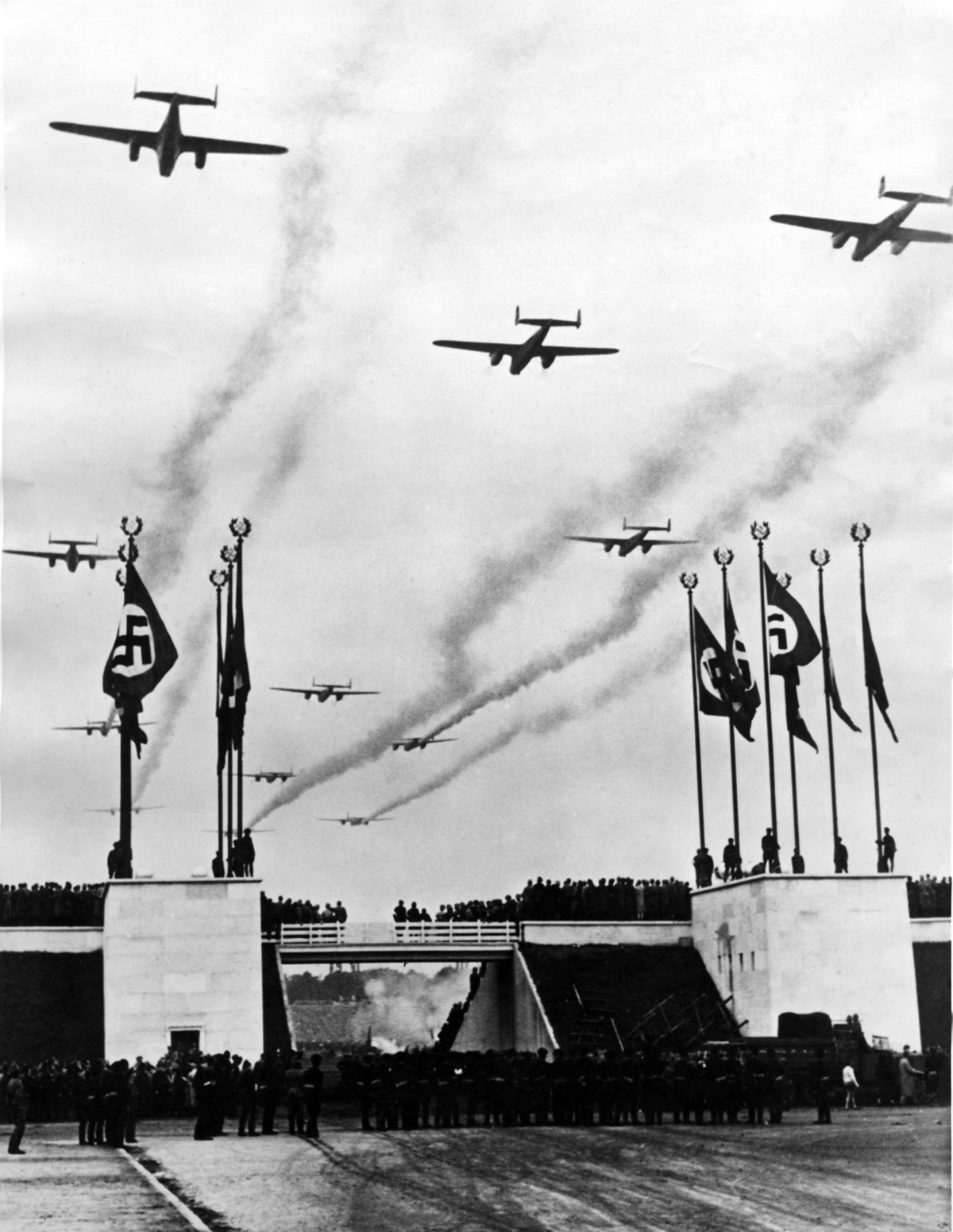
During the late 1930s, a flight of Dornier Do 17s makes an impressive flypast at one of the Nazi Partys Nuremberg rallies. By this time, the Luftwaffe had cast off years of secrecy to openly flaunt its major rearmament programme and new aircraft technologies.
THE RISE AND FALL OF THE LUFTWAFFE
A t the end of World War I, the possibility of Germany creating an effective post-war air arm seemed truly remote. At the Armistice in November 1918, the Luftstreitkrfte (Air Forces) boasted no fewer than 2,709 combat aircraft, 56 airships and 186 balloon detachments. However, it took just two clauses in the post-war Treaty of Versailles to bring to an end Germanys aviation combat capability. Article 198 expressly prohibited Germany from maintaining either land-based or naval air forces, and Article 202 decreed that all existing military aircraft had to be surrendered to the Allies.

